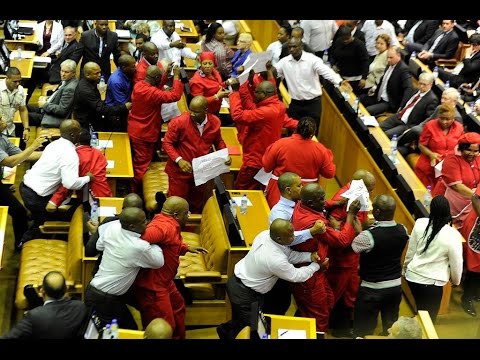
Today in order to accomplish any program or to reach any goal, one has to plan. And planning is only successful when there is enough research in order to base the plan, guide the plan in the right direction, and ensure that the result is the intended goal. The four step public relations plan is a public relations scientific strategy that has proven to work and is mainly used in any public relations program implemented today.
Planning a public relations campaign is important because, it focuses effort, it ensures that the unnecessary is excluded, it improves effectiveness, by working on the specific things, defined objectives will be achieved, it encourages the long term review; to plan requires looking forward, it helps demonstrate value for money; being able to present strengths of the organisation, it allows the project to be favored, in terms of budget cuts, as the project has benefits, it minimizes mishap, and it reconciles conflicts (Gregory, 2000: 38).
The first phase in the planning process which is to conduct Formative Research, this is where research is gathered and analysed regarding the current situation of the company (Step 1), the nature of the organisation; internally and externally (Step 2), and analyzing the publics that have an effect on the organisation (Step 3). The second phase is the Strategy; this consists of establishing goals and objectives (Step 4), Formulating action and response strategies (Step 5). , and developing the message strategy (Step 6).
The third phase is Tactics this is where the implementation of the program of action and communication tactics designed to achieve the specific objectives for each of the public’s to accomplish the program goals (Broom & Sha:263). It involves; choosing the communication tactics (Step 7), and implementing the strategic plan (Step 8), which leads to the final phase which is evaluation research.
This phase involves evaluating the strategic plan (Step 9), this is where assessing the preparation, implementation, and impact of the program is done. And where adjustments are made while the program is being implemented based on evaluation feedback on how it is or not working (Broom & Sha, 2013:263).
1.1 Background of Leratong Hospice
The Organisation that I have chosen to work with using the above mentioned phases in implementing a public Relations program for is called “Leratong Hospice”. Leratong Hospice is an 18 bedded In-Patient facility offering holistic comprehensive care and support- palliative care to all its patients and offering necessary support to their families. The Hospice is situated in Atteridgeville Ext 16, serving the areas of Atteridgeville, Saulsville, the surrounding informal settlements, Lotus Gardens, Pretoria West Laudium, Brits, Hartebeespoort, and neighbouring communities (www.leratong.co.za).

2. Phase 1: FORMATIVE RESEARCH
The first phase, the focus is on the preliminary work of communication planning, which is seen as the need to gather information and analyse the situation. The planner takes three steps and they are as follows: the planner will have to draw on existing information available to the organization and, at the same time, create a research program to gain additional information needed to drive the decisions that will come later in the planning process (Smith, 2016:1).
2.1 STEP 1: Analysing the situation
A situation analysis is the foundation of public relations planning- whether for a comprehensive campaign or just one element such as a writing project. It is a key to successful decision making. It is the crucial beginning of the process. It involves that the planner, clients, supervisors, key colleagues, and the ultimate decision makers are in solid agreement about the nature of the opportunity or obstacle to be addressed in this program. A situation analysis is the foundation of public relations planning- whether for a comprehensive campaign or just one element such as a writing project. It is a key to successful decision making (Smith, 2016:1).
A situation Analysis can be structured in a variety of ways, posing a myriad of questions about the current problem, and the background of the organisation (Heath, 2013:825).
2.1.1 Situational analysis for Leratong Hospice
When evaluating the annual report of Leratong Hospice for 2014, the problem highlighted is that there is a lack of funding and donations for the organisation from the surrounding community, due to the problem that there is not enough activity between the organisation and its Community of Atteridgeville.
Thus the community is not aware of how they can help. Therefore the management teams of Leratong Hospice and the public relations practitioner have agreed that the problem to be solved is that of lack of communication and activities between the organisation and its surrounding community.
2.2 STEP 2: Analysing the organization
This step involves a careful an evaluation of the organisations internal and external environment, specifically begins with a thorough and searching review of perceptions and actions of key actors in the organisation, structures and processes of organisational units relevant to the problem, and the history of the organisation’s involvement (Broom & Sha, 2013:269). The focus is on analysing internal factors that deal with organisational policies, procedures, and actions related to the problem situation.
2.2.1 Organisational Analysis of Leratong Hospice
The environmental analysis for Leratong Hospice comes from Appendix A which is the Leratong Hospice profile and some information from Appendix B which is the Annual Report for 2014, if need any further information provided in this text refer to the mentioned appendix. Vision of Leratong hospice is to offer, “Quality Palliative Care for All”. And the mission of Leratong Hospice is that; “Leratong Hospice is a palliative care centre of excellence providing holistic palliative care for patients and support for their families, and actively promoting palliative care, for the community by the community” (Leratong Hospice Profile, 2014:1).
2. STEP 3: Analysing the publics
In this step a practitioner identifies and analyses their key publics; the various groups of people who interact with their organisation on the issue at hand. Strategic planning is required for Public Relations to provide an objective technique for setting priorities among the various publics identified, thus will help select those most important on the particular issue being dealt with. This step includes a clear analysis of each public in terms of each of its wants, needs, and expectations about the issue (Smith, 2016:1).
This is where a practitioner identifies and defines the public or stakeholders that will be affected by the plan; the influential groups and demographics. Also differentiate the three types of publics, from latent publics: which are publics who are unaware of their connection to that organisation and the problems they face, aware publics, and active publics (Reyneke, 2016:5).
3.1 Internal and external public analysis of the Hospice
The internal Publics or stakeholders of the campaign are the employees of Leratong Hospice, the managing team and the board of Leratong Hospice. The external publics is the Community of Atteridgeville from Atteridgeville, the department of health, current and other potential funders and donators, hospitals that send patients to Leratong Hospice such as Kalafong Hospital, different churches, business owners, and families.
3. PHASE 2: STRATEGY
Strategy is the heart of planning for public relations, strategy is the determination of how the organisation decides what is needed to achieve, how it is going to be achieved. Strategy has a dual focus: the action of the organisation (both proactive and responsive), and the content and its messages (Smith, 2013: 93).
This stage deals with the heart of planning – making decisions dealing with the expected impact of the communication, as well as the nature of the communication itself. As soon as the public relations problem or opportunity is defined through research and analysis, a practitioner must determine what is the goal desired by organisational management, whether it is to mitigate the problem or to capitalise on opportunities? Once the goal is set the practitioner must devise a strategy for achieving that goal (Broom & Sha, 2013:288).
4.1 STEP 4: Establishing a goal and objectives
This step focuses on the ultimate position sought for the organization and for the product or service. It helps a practitioner to develop clear, specific, and measurable objectives that will help identify the organisations hoped for impact on the awareness, acceptance, and action of each key public. A good deal of objectives is given to the main objectives dealing with acceptance of the message, because this is the most crucial area for both the public relations and marketing communication strategies (Smith, 2016:2).
Goals are broad, summative statements that spell out the overall outcomes of a program. Goals reflect the problems and opportunities identified in the research step. The broader the organisational goals the more framework provided to the public relations practitioner (Reyneke, 2016:4).There are two types of goals, the long term goal, and the short term goal. Setting a realistic objective is absolutely vital to ensure that the programme or campaign that is being planned has direction and demonstrably achieves something (Gregory, 2000:78).
Objectives are the specific knowledge, opinion, and behavioural outcomes to be achieved for each target public, they provide focus, direction for developing strategies and tactics, and offers guidance and motivation to those implementing the plan (Davis, 2010: 15). The best way to ensure accurate objectives for your plan is to use the SMART method, which helps to determine whether the objectives describe concrete achievements and outcomes that support the stated goal.
4.4 STEP 5: Formulating action and response strategies
This step focuses on the typologies of public relations initiatives and responses a variety of possible actions is available to the organization, and in this step a practitioner may consider what to do in various situations. No strategic campaign would include each and every possible option, but a well-planned campaign will have to consider each in light of its goals and objectives (Smith, 2013:2).
Action focuses on internal organisational change, thus the actions that will be taken by the organisation itself in order to fix the problem at hand or to seize an opportunity (Reyneke 2016:2),. Tactics are what practitioners do and are in the form of media release, lobbying, media kits, news alerts, press conferences etc (Heath, 2005:844).
4.5 The strategy
The strategy is in the form of pamphlets, where pamphlets will be given to individuals in churches, money for printing will be collected from available sponsor that has agreed. And then pamphlets in small business around Atteridgeville who are already donors of Leratong Hospice, as it will be easier to persuade them to distribute, and also to Kalafong hospital, to ensure that the information reaches the masses a news release will be sent to the local newspaper (Tshwane Times) and a short message created for radio that will be read by a presenter. And also visits to Churches in the community, where the members are informed through presentations, in order to reach those who avoid reading flyers and pamphlets in church, and to create a view of the level of importance of this initiative.
4.6 The action
The action to be taken is to create pamphlets, distribute these pamphlets, contact the local newspaper and send a news release, send another news release to the local radio station to communicate to the public. And lastly the action event is a health day at the hospice in September in order to show gratitude from the hospice to all the participating members of the community by teaching the community on how to take care of themselves, and have expert talks from the experts within the hospice. In terms of the event if sponsors do not sponsor what is needed of them, new and other sponsor from the new active public will be contacted and requested to help sponsor.
4.7 STEP 6: Developing the message strategy
Development of the message strategy is done in this step. It deals with the various decisions about the message, such as the person or entity that will present the message to the organization’s key publics, the content of the message, its tone and style, verbal and nonverbal cues, and related issues. Various lessons from the research about persuasive communication and dialogue will be applied for the ultimate purpose of designing a message that will reflect the information gained through Step 3 focusing (Smith, 2013:3).
4. PHASE 3: TACTICS
5.1 STEP 7: Choosing communication tactics
In this step the selection of communication tactics is acknowledged. It deals with the various communication options. The planner will consider four specific categories: face-to-face communication and opportunities for personal involvement; organizational media (controlled media); news media (uncontrolled media) and lastly advertising and promotional media which is also another form of controlled media. In as much as all these tools can be used by any organization, not every tool is appropriate for each issue (Smith, 2013, 3).
5.2 Communication tactics for Leratong Hospice’s campaign
1) The pamphlet
The pamphlet will be made by the public relations practitioner, and finalised by the general manager, it will state the following information; short description of the hospice; Pictures of the hospice, and its staff, the role of the community towards the hospice, challenges the Hospice is facing, how and why the community can help. And most importantly the banking details of the Hospice.
2) The News Release
The news release will also be done by the public relations practitioner, and finalised by the general manager, and it will have a picture of the Hospice, the banking details of Leratong Hospice, a short description of the hospice, the challenges the hospice face, and how and why the community can help.
3) The Radio Message
Which is also done by the public relations practitioner, it will state a short description of the Hospice, the challenges faced by the Hospice, and why and how the community can help, and banking details of the hospice.
4) Facebook message
Facebook message will be done by the public relations officer, it will communicate the details of the campaign, the description of the hospice, bank details of the hospice, and the website of the hospice.
5.3 STEP 8: Implementing the strategic plan
In step 8 planners turn the raw ingredients identified in the previous step into a recipe for successful public relations and marketing communication. In this step planners also package the tactics identified in the previous step menu review into a well planned communication program. Planners also develop budgets and schedules, and otherwise prepare to implement the communication program. A budget is simply the specific money needed in order to complete the planned activity. The budget is organised by public and strategy, the budget should project the cost of each tactic in very specific terms, and it should also indicate where cost will be offset by donation or sponsorship (Litwin, 2009:227).
Once the plan has been developed the management should have a feedback system in place, where verbal or written reports are communicated on a regular and timely basis throughout the whole program implementation. This allows evaluation to be more effectively conducted. Compiling feedback is an on-going process: returning back to every activity from the programme implementation to the evaluation on a regular and continual basis (Timmreck, 2009:210). This is the final phase of strategic planning and it deals with evaluation and assessment. It enables one to determine the degree to which the stated objectives have been me and thus to modify or continue the communication activities.
5. PHASE 4: EVALUATION RESEARCH
6.1 STEP 9: EVALUATING THE STRATEGIC PLAN
Evaluation is a complex process that has to be actively implemented and effectively put into action at all levels and phases of a project or service. It should be conducted on an ongoing and regular basis; the most useful approach to evaluation is through the development of goals, general objectives, and specific objectives. Goals and objectives are looked at to determine if they have been met, if outcomes are realised, to what extent they have been met, and what still needs to be done (Timmreck, 2003:1287). This is the final step of the planning element, indicating for measuring the effectiveness of each tactic recommended in the meeting the stated objectives
It can also be concluded that most of the work is done in the situation analysis stage where all factors considered ensuring that the objectives are realistic. And lastly evaluation plays a very vital role, since one can never know if they have reached a goal without measuring the outcomes, thus all outcomes have to be measured during and after the implementation in order to see if the goal is reached, the mistakes in the plan, and how the mistakes can be corrected in the future, and the best way to evaluate is to use the clear objectives and see how they have been met.
In conclusion it can be confirmed that any program or goal cannot be reached without proper planning towards it. And if proper research is not conducted it is impossible for a person plan to a proper program or goal execution, since the goal guides the plan in the right direction. It can also be concluded that in order to execute a successful plan one has to ensure that they follow the required steps from conducting, formative research of the organisation, compiling a strategy, planning specific tactics to follow, and evaluating the implementation of the plan.
It can also be concluded that the nine step plan is similar to the 4 step, only the four step plan is broken down into specific factors, that must be considered and performed in detail, in order to ensure the success the of a plan, and also these steps help to highlight the importance of planning a public relations campaign as it helps highlight important information about the organisation that is needed.
This slideshow requires JavaScript.
References
Austin, E, W. Pinkleton, B, E. 2006. Strategic Public Relations Management: planning and managing effective communication programs. London: Lawrence Erlbaum Associates, Publishers.
Broom, M. Sha, B. 2013. Effective Public Relations . England: Pearson Education Limited.
Davis, M. 2010. Communication Planning. [Available] http://www.pracademy.co.uk/wp-content/uploads/2009/12/Day5-Adv-Cert-170410.pdf (Accessed 12 May 2016).
Glen, M. Broom, M. 2008. Cutlip & Center’s: Effective Public Relations. Engalnd: Pearson.
Gregory, 2000. Planning and Managing Public Relations Campaign. London: Kogan
Heath, R,L. 2013. Encyclopedia of Public relations. United States of America: SAGE Publications.
Leratong Hospice. 2013. Leratong Hospice Profile. Atteridgeville: Leratong Hospice.
Leratong Hospice. 2014. Annual Report. [Available] http://leratong.co.za/reports/2014.ppdf (Accessed 12 May 2016).
Leratong Hospice. 2015. About Leratong Hospice. [Available] http://Leratong.co.za/about_us. (Accessed 12 May 2016).
Litwin, M, L. 2009. The Public Practitioners Playbook. United States of America: Author House.
Narzuko, L. 2004. Managing a Quality Service. United Kingdom: Bath press Ltd
Reyneke, A. 2016. Planning and Programming-Goals and Objectives. [Available] http://mylms.cti.ac.za/mod/resource/view.phd?id=20874 (Accessed) 5 May 2016).
Smith, R, D. 2013. Strategic Planning For Public Relations. United Kingdom: Routledge
Smith, R, D. 2016. Strategic Planning For Public Relations: Four phases, Nine Steps. [Available] http://www.ron-smith.com/#!strategic-planning-for-public-relations/l4229 (Accessed 5 August 2016).
Timmreck, T, C. 2002. Planning, program Development, and Evaluation. Canada: Jones and Bartlet Publishers.



















